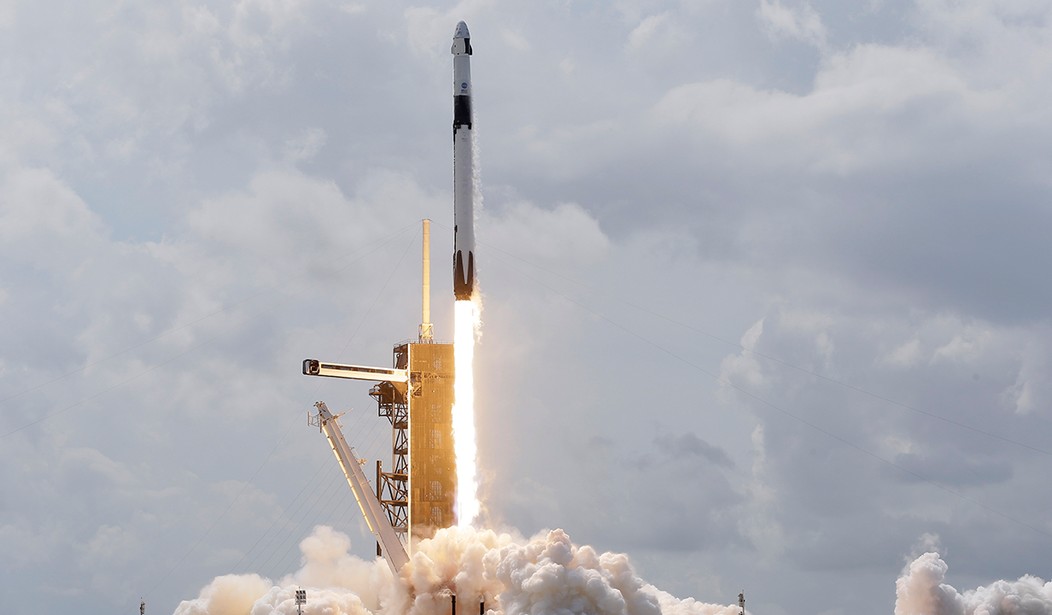The US has a good head start on China when it comes to plans to send astronauts to the moon (or back to the moon in our case). But while the Chinese schedule appears to be moving ahead smoothly, the US schedule has been slipping thanks to regulatory issues.
China’s last moon mission, the Chang’e-5, landed on the moon in 2020 and returned samples to the earth. It’s next mission, expected to launch next year, will do the same thing but this time the samples will come from the far side of the moon. That will be followed by two more in 2026 and 2028 which are seen as preparation for a crewed mission to the moon. China hasn’t put an exact date on the crewed mission but has said it hopes to do it before 2030.
The mission, expected to take place before 2030, is part of a project to establish a lunar research station. It will investigate how best to build the facility, and carry out moon exploration tasks and other experiments, Zhang said.
Two launch vehicles will send a moon surface lander and manned spacecraft into lunar orbit, before they dock with each other, according to state-run Global Times. After docking, the Chinese astronauts on board the spacecraft will enter the lander, which is used to descend to the moon’s surface…
To prepare for the mission, Chinese researchers are busy developing all the necessary equipment including moon suits, manned lunar rovers, manned spaceships and moon landers, Xinhua reported.
The US has also been gearing up for a manned mission to the moon. But according to Space X, our schedule could fall behind China’s schedule if delays continue.
Late last year, NASA successfully completed the Artemis I mission, the first in its renewed lunar effort, sending the Orion crew capsule, without anyone on board, on a trip around the moon. By the end of next year, or early 2025, it intends to fly the Artemis II mission, sending Orion past the moon again, this time with a crew of four: three NASA astronauts — Christina Koch, Victor Glover and Reid Wiseman — as well as a Canadian astronaut, Jeremy Hansen.
But the timeline for a human landing, known as Artemis III, is uncertain. NASA is depending on SpaceX to use its Starship rocket and spacecraft to ferry astronauts to and from the lunar surface. But the vehicle has flown only once, in April, and had to be destroyed when it started tumbling out of control a few minutes into flight. Recently, the Federal Aviation Administration completed its investigation, but it is waiting on a separate investigation by the U.S. Fish and Wildlife Service into the environmental impacts of the launches before issuing SpaceX a launch license.
SpaceX has been pushing the regulatory agencies to move faster because it needs to launch Starship many times, including an uncrewed test mission to the moon, in order to prove to NASA that the vehicle is safe and reliable enough for human spaceflight. SpaceX also intends to refuel Starship in low Earth orbit before going to the moon, a challenging task that has not been accomplished before and would require a fleet of tanker spacecraft.
Space X’s Vice President, William Gerstenmaier, has been pushing the bureaucracy to work faster.
“It’s a shame when our hardware is ready to fly, and we’re not able to go fly because of regulations or review,” Gerstenmaier said, noting that SpaceX has been ready for a month to launch the next Starship test flight. “Licensing, including environmental (review), often takes longer than rocket development. This should never happen. And it’s only getting worse.”
He also claimed the regulatory delays have “nothing to do with public safety.”…
“These delays may seem small in the big scheme of things but…. delays in each and every test flight adds up. And eventually we will lose our lead and we will see China land on the moon before we do,” Gerstenmaier said…
The US Fish and Wildlife Service, which is tasked with evaluating the environmental impacts of SpaceX’s test flight, told CNN on Wednesday that it’s working to begin an official consultation with the FAA. After that, the Service will have up to 135 days to deliver an opinion.
In other words, the Fish and Wildlife review could drag this next launch into 2024.
Even in the worst case situation, there’s no real danger that China could try to seize the moon for itself. There are already international treaties that prevent that. But there is a danger that China could try some version of what it has been doing in the South China Sea, i.e. claiming territory and then demanding others stay out of their zone. NASA Administrator Bill Nelson made exactly this comparison back in January.
“It is a fact: we’re in a space race,” the former Florida senator and astronaut said in an interview. “And it is true that we better watch out that they don’t get to a place on the moon under the guise of scientific research. And it is not beyond the realm of possibility that they say, ‘Keep out, we’re here, this is our territory.’”
He cited an Earthly example in the South China Sea, where the Chinese military has established bases on contested islands. “If you doubt that, look at what they did with the Spratly Islands.”
The US has put together a plan for future space policy called the Artemis Accords. So far 31 countries have signed on to it, but naturally China is not one of them. Todd Harrison from the Center for Strategic and International Studies told the Post it’s a question of who will get to set the norms for behavior on the moon. “We want to do that in a way that’s consistent with our values and our economic system. And if China gets there first, they will get to set precedent that’s based on their values and their economic system,” he said.
So, for now, Space X’s Starship has been rebuilt, redesigned and is ready to go once US Fish and Wildlife signs off.
Starship fully stacked while team prepares for a launch rehearsal. We continue to work with the FAA on a launch license pic.twitter.com/1uJdDmCouI
— SpaceX (@SpaceX) October 16, 2023
Musk, as usual, is laughing at the absurdity of the situation.
I would like to buy a license for my fish
— Elon Musk (@elonmusk) October 29, 2023
Starship launch? Not before a fish license. Why? According to the rules I am told you need some sort of fish license 🎣 pic.twitter.com/jR634hNuFu
— Christopher Stanley ⛄ (@cstanley) November 12, 2023








Join the conversation as a VIP Member